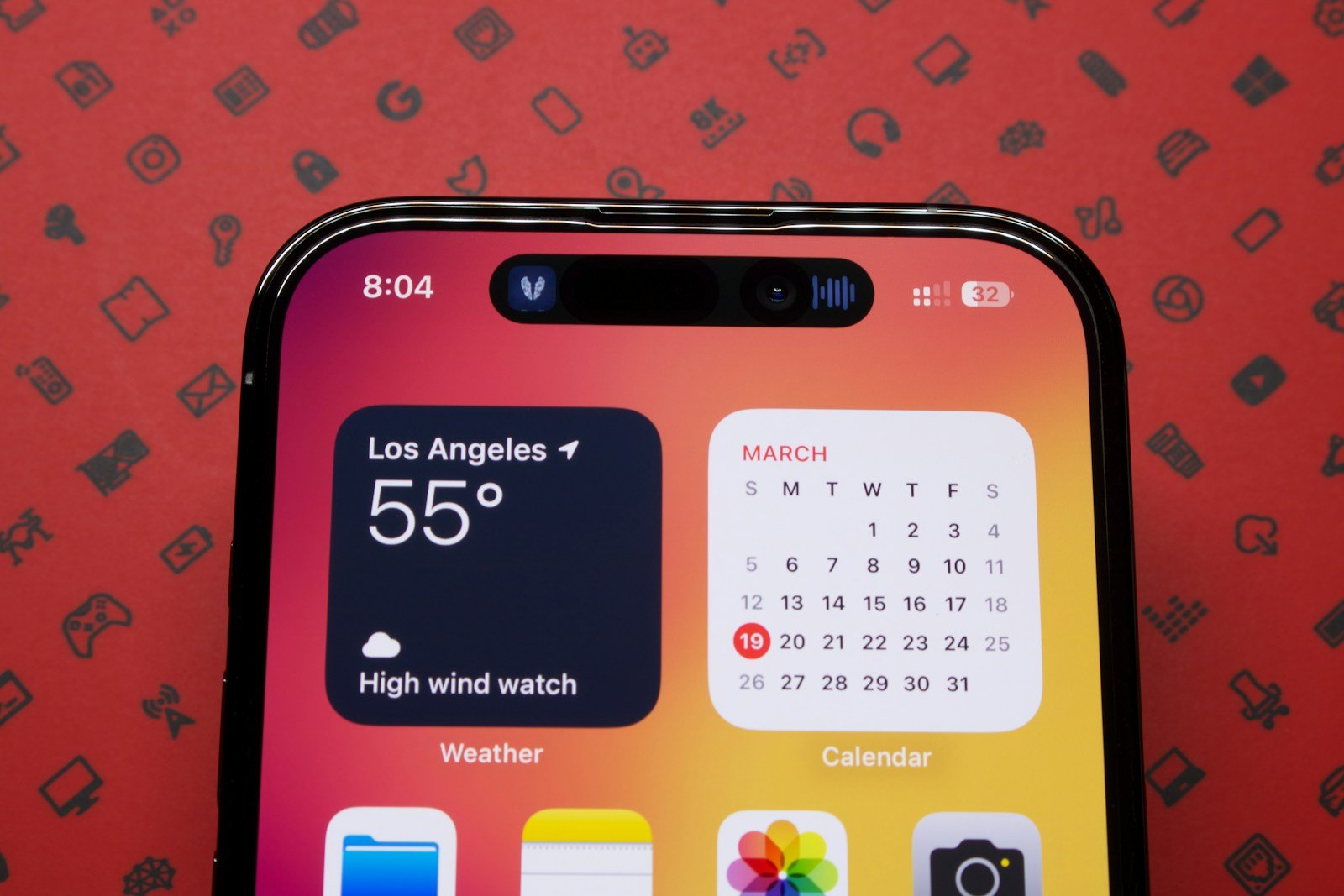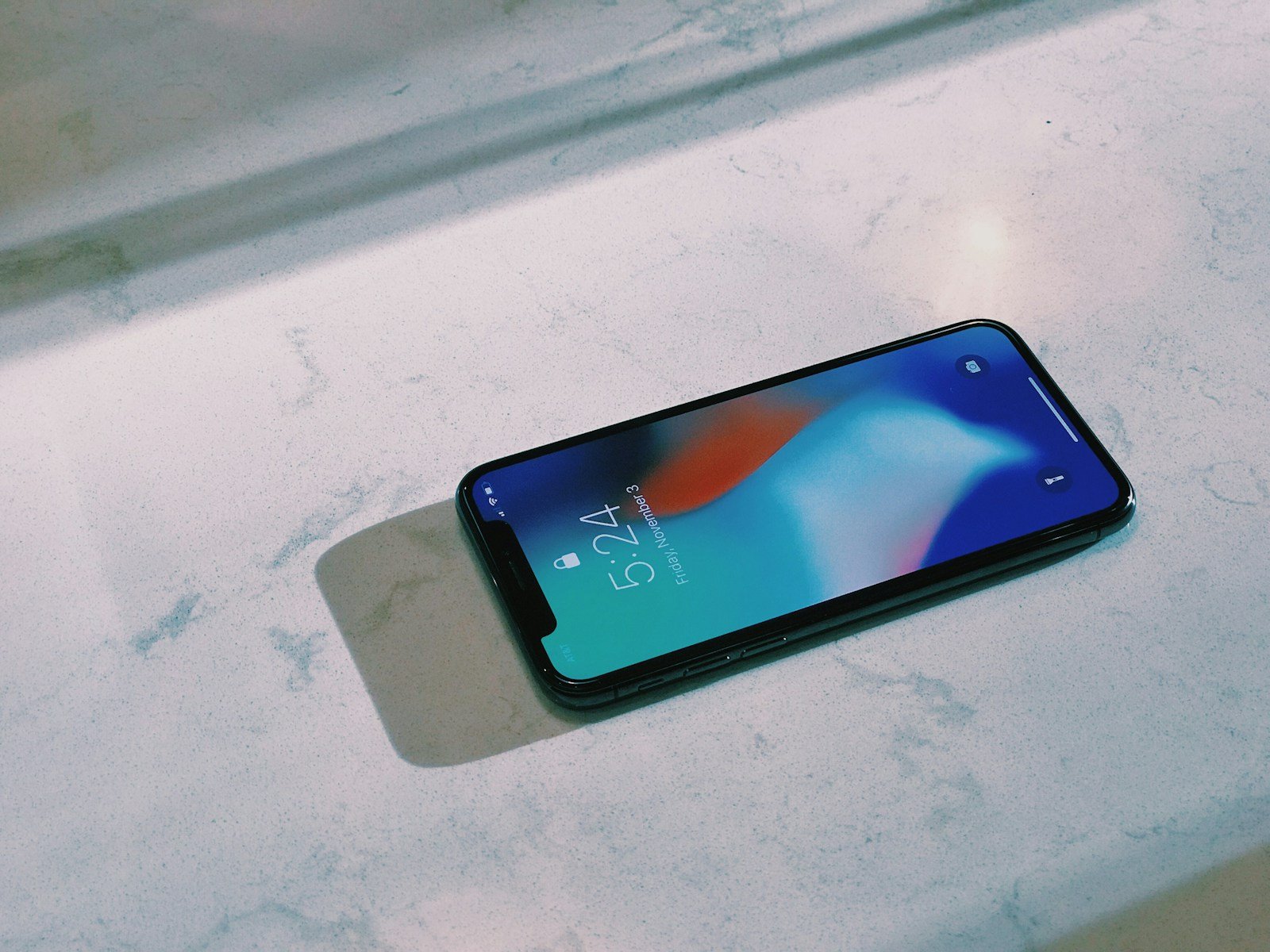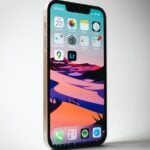With the launch of the iPhone 15, Apple has once again redefined the smartphone’s display and design. The most noticeable change is the replacement of the familiar notch. Apple introduced the concept of the notch with the iPhone X, housing the front-facing camera and facial recognition sensors. The iPhone 15 has moved away from this design, opting instead for a new feature called Dynamic Island. This feature transforms the space into a more interactive and multifunctional area, enhancing the user’s experience.
Dynamic Island on the iPhone 15 brings a fresh approach to how alerts, notifications, and interactions are displayed. This pill-shaped area is adaptive; it can dynamically expand and contract to accommodate different types of content without interrupting the user’s activity. This design change signifies a shift towards a more seamless integration of software and hardware elements in Apple’s devices. It offers users a more engaging way to receive information and manage their phone’s functionality.
This update represents Apple’s continuous innovation in the field of smartphone technology. Moving away from the static notch to a more responsive design element demonstrates the company’s commitment to aesthetic and functional improvements. The iPhone 15 has thus set a new benchmark with its introduction of the Dynamic Island, combining discrete notifications and functionalities within a sleek and unobtrusive interface.
iPhone Notch vs Dynamic Island
Apple’s approach to the front display cutout — where the selfie camera and Face ID sensors live — has changed dramatically over the years. The Notch defined iPhones for half a decade, while the Dynamic Island introduced a more interactive and modern approach.
Let’s break down the differences, advantages, and which one is better for you in 2026.
🧩 What Is the iPhone Notch?
The Notch first appeared on the iPhone X (2017) and remained a staple through models like the iPhone 13 and some iPhone 14 variants.
It’s the black cutout at the top of the display that houses:
- The TrueDepth camera for Face ID
- Infrared sensors
- Ambient light and proximity sensors
- Front-facing camera
Design goal: maximize screen area while keeping Face ID hardware intact.
Pros:
- Clean, symmetrical design
- Iconic and recognizable
- No moving parts, simple integration
Cons:
- Takes up static screen space
- Not interactive
- Feels dated by modern standards
🌊 What Is the Dynamic Island?

Introduced with the iPhone 14 Pro (2022), the Dynamic Island reimagined the notch by turning the camera cutout into an interactive, adaptive UI element.
It’s a pill-shaped cutout that expands and morphs to display real-time information like:
- Incoming calls and notifications
- Music playback
- Timer, AirPods connection, and navigation
- Live Activities (sports scores, rideshare updates, etc.)
Design goal: blend hardware and software for a more fluid experience.
Pros:
- Interactive and functional
- Cleaner aesthetic with smaller footprint
- Integrates live information seamlessly
- Feels futuristic and dynamic
Cons:
- Slightly more intrusive during video playback
- Some apps still don’t fully utilize it
- Still not a “true” full-screen design
⚙️ Technical Comparison
| Feature | Notch | Dynamic Island |
|---|---|---|
| First Appearance | iPhone X (2017) | iPhone 14 Pro (2022) |
| Design Type | Static cutout | Interactive pill-shaped cutout |
| Functionality | Houses Face ID and camera | Houses Face ID and camera + interactive UI |
| Screen Space Usage | Takes fixed space | Adapts dynamically to content |
| Supported Models (2025) | iPhone X → iPhone 14 / 16e | iPhone 14 Pro → iPhone 17 lineup |
| User Interaction | None | Tap, hold, expand, and view live info |
| Visual Appeal | Classic, simple | Modern, immersive |
| Software Integration | Minimal | Deep iOS integration (Live Activities, multitasking) |
🧠 User Experience
- Notch users get a consistent, unobtrusive experience but lose some screen real estate.
- Dynamic Island users enjoy a more engaging interface that blends notifications and multitasking without cluttering the screen.
For example, when you’re listening to music, the Dynamic Island shows album art and playback controls — something impossible on the notch.
🔮 The Future: Beyond the Dynamic Island
According to recent reports (Republic World, 2025), Apple may phase out the Dynamic Island in future iPhones, possibly moving toward under-display Face ID and camera technology.
This would allow for a completely uninterrupted display, marking the next step in Apple’s design evolution.
🏁 Final Verdict: Which Is Better?
| Category | Winner |
|---|---|
| Aesthetics | Dynamic Island |
| Functionality | Dynamic Island |
| Simplicity | Notch |
| Future-proofing | Dynamic Island |
✅ Overall Winner: Dynamic Island
It’s more than just a design tweak — it’s a functional upgrade that enhances multitasking and interactivity while maintaining Apple’s sleek design philosophy.
However, if you prefer a more minimal, distraction-free experience, the Notch still does its job well — especially on older or budget iPhones.
Key Takeaways
- The iPhone 15 introduces Dynamic Island, replacing the traditional notch.
- This feature harmonizes design with function, offering a new way to interact.
- Apple maintains its innovative edge with this seamless and intuitive update.
Design and Display Innovations
The iPhone 15 introduces notable changes to its design, especially with the evolution of the notch to a new ‘Dynamic Island.’ This section explores the implications of that transformation and how it enriches the user experience.
Evolution of the Notch and Dynamic Island
The iPhone 15 marks a departure from the traditional notch with the introduction of a Dynamic Island. The notch, which housed the TrueDepth front camera and Face ID sensors, has been a defining feature in previous models, but now it has evolved. The Dynamic Island is not just an aesthetic change; it serves as an interactive hub for notifications and activities, enhancing usability. Face ID and the front camera are seamlessly integrated into this new feature, providing both functionality and an expansive screen experience with minimal visual interruption.
Screen Technology and User Experience
The screen of the iPhone 15 series employs OLED technology known for its vibrant color output and deep blacks, offering users an immersive experience. With the redesign, privacy indicators and other essential alerts integrate into the Dynamic Island, maintaining user privacy without compromising on-screen real estate. The iPhone 15 Pro models offer an even brighter display, enhancing visibility across various lighting conditions. These advancements demonstrate Apple’s commitment to creating a harmonious blend of form, function, and technological innovation within its display offerings.
Interactivity and Functionality
The iPhone 15’s Dynamic Island revolutionizes how users interact with their device. It enhances the functionality of notifications and brings new life to app integrations.
Integration with iOS and Apps
Dynamic Island works seamlessly with iOS 17. It transforms the once static notch area into a part of the interactive display. Users can see album art when playing music or check AirPods battery life. During phone calls, it shows call information. It even integrates with third-party apps, allowing users to interact with live activities like timers or SharePlay sessions without diving into the app itself.
Enhanced Notifications and Indicators
Notifications on the iPhone 15 are more intuitive. Users can see indicators for microphone usage or when the device is recording. They can also easily access Apple Pay or Airdrop through the Dynamic Island. When receiving incoming phone calls or using Face ID for authentication, this feature provides visual cues directly within the island. It even displays turn-by-turn navigation from Maps or USB-C connection statuses, swiftly conveying information without disrupting the user experience.







